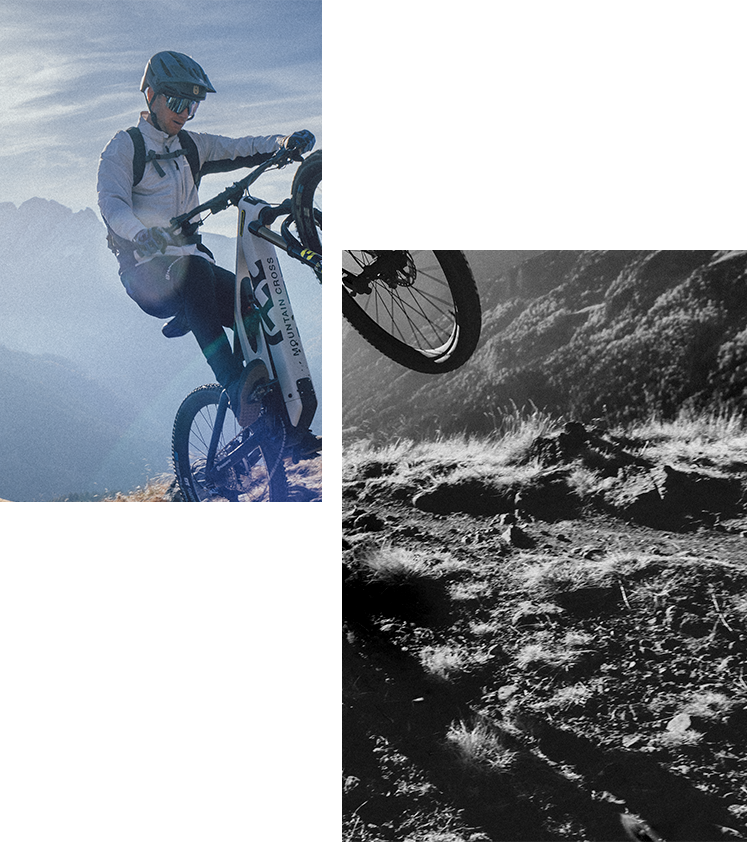How to winter-proof your eMTB
We believe there is no off season. So don’t leave your bike in the garage this winter. Get out there, keep riding, and enjoying the trails…
Here are 10 tips to winter-proof your eMTB and beat the cold weather blues…
Go tubeless
Punctures suck and even more so in winter. Changing a tube trailside, when your fingers are freezing and your bike is caked in mud, is just not fun. The majority of MTB wheels and tyres are tubeless compatible. Instead of a traditional tube a special sealant is poured into the tyre during fitting, which fills and seals a puncture to avoid deflation. You can also add a foam-like insert to further defend against punctures.
Mud tyres for grip
Tyres are not just black and round. They are available in a wide range of compounds to suit every type of riding condition imaginable. An easy rule-of-thumb for winter is switch to mud tyres. Thanks to a larger knob depth, wider profile and thicker carcass you can run a lower tyre pressure and cut deeper into the mud to maximise grip.
Lube right
Not all chain lubes are the same - there’s lube for both bad and good weather. During winter apply a wet chain lube. Intended for rain, mud and snow, its chemical properties ensure it sticks to the chain longer and doesn’t wash away. This keeps your drivetrain properly lubricated and running smooth.
Tighten your nuts
There’s nothing fun about fixing an avoidable mechanical while exposed on the side of a mountain as your fingers turn numb with the cold. Checking nuts and bolts for tension, and giving your bike a good visual once over, should be routine all-year round, but during winter it’s extra critical. Check your bike over at home, in the warmth.
Brake more for less
A cost-effective approach to winter riding and extending your stopping power is switching to sintered brake pads. Generally speaking, pads are available in two types of compounds - organic and sintered. Organic are a softer material, grip the rotors better under braking and therefore stop faster. But thanks to nature’s grinding paste, they don’t like mud and grit all that much and wear down quicker. Sintered pads are harder, so resist wear for longer. The offset is a slight reduction in stopping power, but because you are travelling slower it’s a worthwhile trade off. They can also squeal pretty loudly, but use that to your advantage and work on your braking technique by trying to lay off the levers.
Switch to flats
If you normally ride clip-less, it’s worth considering a switch to flat pedals for winter. Slippery, muddy trails mean unpredictable grip. Running flats lets you dab a foot when the front wheel washes away entering a corner or from a sudden loss of traction when climbing. An additional benefit of getting back to flats is boosting those bike skills. Work on foot placement so you can charge harder in the summer when you’ve clipped back in.
Look after your battery
Your battery is the life and soul of your eMTB. No power, no go! So look after it. All forms of batteries need love and attention, so always try and keep your bike stored in a warm, indoor environment. If that’s not an option, an insulated blanket across the frame and motor or a bike covering will help shelter it from the elements when you’re not out riding.
Silicon spray
Silicon spray has great water dispersing capabilities and is electrical-friendly too. A coating of spray over the motor and battery covers forms a barrier to help protect those parts from excessive water splashes and snow melt.
Fit mudguards
Mudguards have become the must-have accessory for winter riding. One of the cheapest and easiest-fitting parts you can add to you MTB, they really do protect both rider and bike during wet, harsh wintery riding. Available in different lengths - short and stubby are intended for mild-mud riding, while full-length mudguards cover more of the wheel for monsoon-like conditions – mudguards deflect the spray thrown up from your wheels, away from you and your bike. That not only means a cleaner bike and riding kit, but you stay dryer and with cleaner vision can get on with charging the trail.
Transportation
Don’t let all that pre-ride preparation go to waste on the drive to your local trail centre. Roads are salted during winter and that salt spray can really damage your bike, especially the battery and motor, and any exposed aluminium parts, when transporting it on the back of a car. If you can put it inside the vehicle, that’s great, if not, try to cover the battery and motor during transport and remember to wash it down once you get home.


